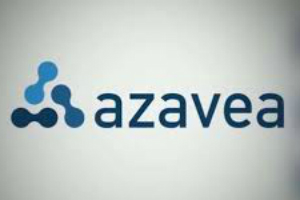Fundraising abuse is the most common area of enforcement but state charity offices have not caught up to Internet or social media fundraising while staffing has remained stable since the Great Recession.
Preliminary findings of the Joint Research Project by the Columbia Law School Charities Regulation and Oversight Project and the Urban Institute were released recntly. The study examined all charity regulation in each state and surveyed 56 jurisdictions, including all 50 states and Washington, D.C., as well as Guam, Puerto Rico, American Samoa, Northern Mariana Islands and the Virgin Islands.
Cindy Lott, executive director and senior counsel to the National State Attorneys General Program at Columbia Law School, and Karin Kunstler-Goldman, assistant attorney general in the New York Attorney General’s Charities Bureau and consultant to the Charities Project, presented the initial findings during the public day of the National Association of State Charity Officials (NASCO) and National Association of Attorneys General (NAAG) conference.
Slightly more than half (53 percent) of offices have had the same level of staffing since 2008 and 31 percent saw an increase in staffing levels, leaving only 13 percent that decreased staffing levels. Despite budget cuts in government since the recession, Lott said staffing has been stable, however, it also is not increasing either, even though there are more nonprofits every day. Staff can include not only include attorneys but also paralegals, clerical staff, investigators, and CPAs.
The advent of Form 1023 EZ should be a “big consideration for how we want the sector to run,” she said, referring to the expedited tax-exempt application that the IRS started last year. The full report is expected to be released later this fall.
The most common fundraising method regulated by states is telephone (82 percent), followed by in-person (80 percent) and special events (80 percent). Regulation of fundraising via Internet (76 percent) and social media (70 percent) were not as common.
“This is why people don’t understand what it is you guys do in the office,” Lott said as she presented a slide listing the areas of authority for state charity regulators, AG offices and other state offices. In some cases, the areas of authority were interconnected while in others they were solely the responsibility of one office: solicitation, registration, registration compliance, criminal, board governance, wills/trusts, conservation easements, and transaction review.
Three quarters of states require charities and or fundraising professionals to register with the state and file annual financial reports. More than one half of states — large and small — house the registry in an agency other than the attorney general’s office, called “bifurcated” jurisdictions. The AG has jurisdiction over charitable assets and who administers them while another agency maintains the registry and enforces regulation and filing requirements. When it comes to state charity oversight, other agencies can include the Secretary of State, Departments of Agriculture, Consumer Affairs/Protection, and Financial Regulation.
The study focuses on the structure and nature of state charities regulators’ offices, the jurisdiction and types of charities overseen, and the tools for execution of oversight, to provide a baseline, Lott said.
The survey gathered data on six primary aspects of charity office organization and activity since 2008: Office size and structure; Staffing; Outreach, press, and transparency; Funding; Data and tracking; and, Types of enforcement.
Fundraisers and charities are the primary types of entities required to register with state offices, but not the only ones:
* 68 percent, fundraisers;
* 60 percent, charities;
* 30 percent, charitable trusts;
* 13 percent, religious organizations;
* 9 percent, hybrids;
* 9 percent, political organizations;
* 7 percent, Benefit/B corporations; and,
* 7 percent, L3C companies.
Less than half of 50 jurisdictions (44 percent) reviewed require audited financials from charitable organizations. Generally, larger state charities offices are more likely to require filing than smaller offices, however, the relationship isn’t statistically significant, Lott said.
About 56 percent have no requirement or optional audits while 24 percent require audits of organizations with revenue of $500,000 to $1 million; 1 in 8 require audits of organizations with revenue of less than $500,000, and half has many have a $1-million threshold. There is no threshold among 2 percent of jurisdictions.
Education and outreach by state charity offices are primarily done via press releases (82 percent) and tips for donors (77 percent). Less common vehicles for state charity offices include:
* 65 percent, educational material;
* 53 percent, website:
* 51 percent, hotline;
* 43 percent, email address;
* 33 percent, annual reports;
* 32 percent, trainings;
* 25 percent, email blasts;
* 9 percent, newsletters; and,
* 7 percent, webinars.
Fundraising abuses are by far the most common areas of enforcement:
* 62 percent, fundraising abuse;
* 36 percent, governance;
* 36 percent, trust enforcement;
* 23 percent, other;
* 21 percent, fraud/diversion;
* 21 percent, registration; and,
* 3 percent, conservation easements.
Approaches to enforcement were relatively similar, with nearly all offices (98 percent) in direct correspondence with the organization, with large percentage seeking to obtain a settlement agreement (88 percent) or information resolution (85 percent). In their attempts to enforce, authorities approach situations in such a way as to try to avoid killing off the organization in enforcement, Lott said.
Among the less frequent types of enforcement are:
* 80 percent, impose fines/penalties;
* 79 percent, seek legal injunction;
* 74 percent, send delinquency notices;
* 58 percent, revoke, terminate or cancel registration;
* 54 percent, enter letter agreements;
* 53 percent, obtain court order to dissolve charity;
* 49 percent, tracking of enforcement actions in-state;
* 44 percent, conduct administrative proceedings; and,
* 31 percent, tracking of enforcement actions elsewhere.
Further research to be released in a more complete report later this year will include criminal jurisdictions, rates of enforcement, funding sources and mechanisms, internal capacity as correlating to transparency, and relationship and work with the IRS.










